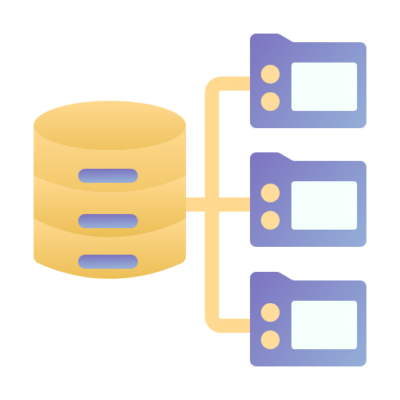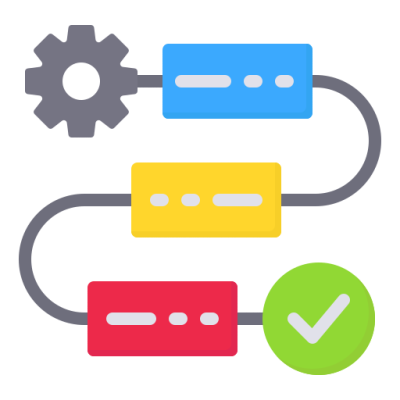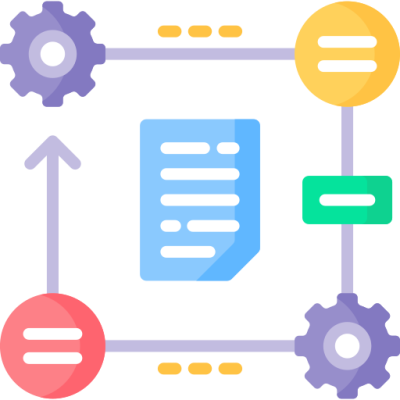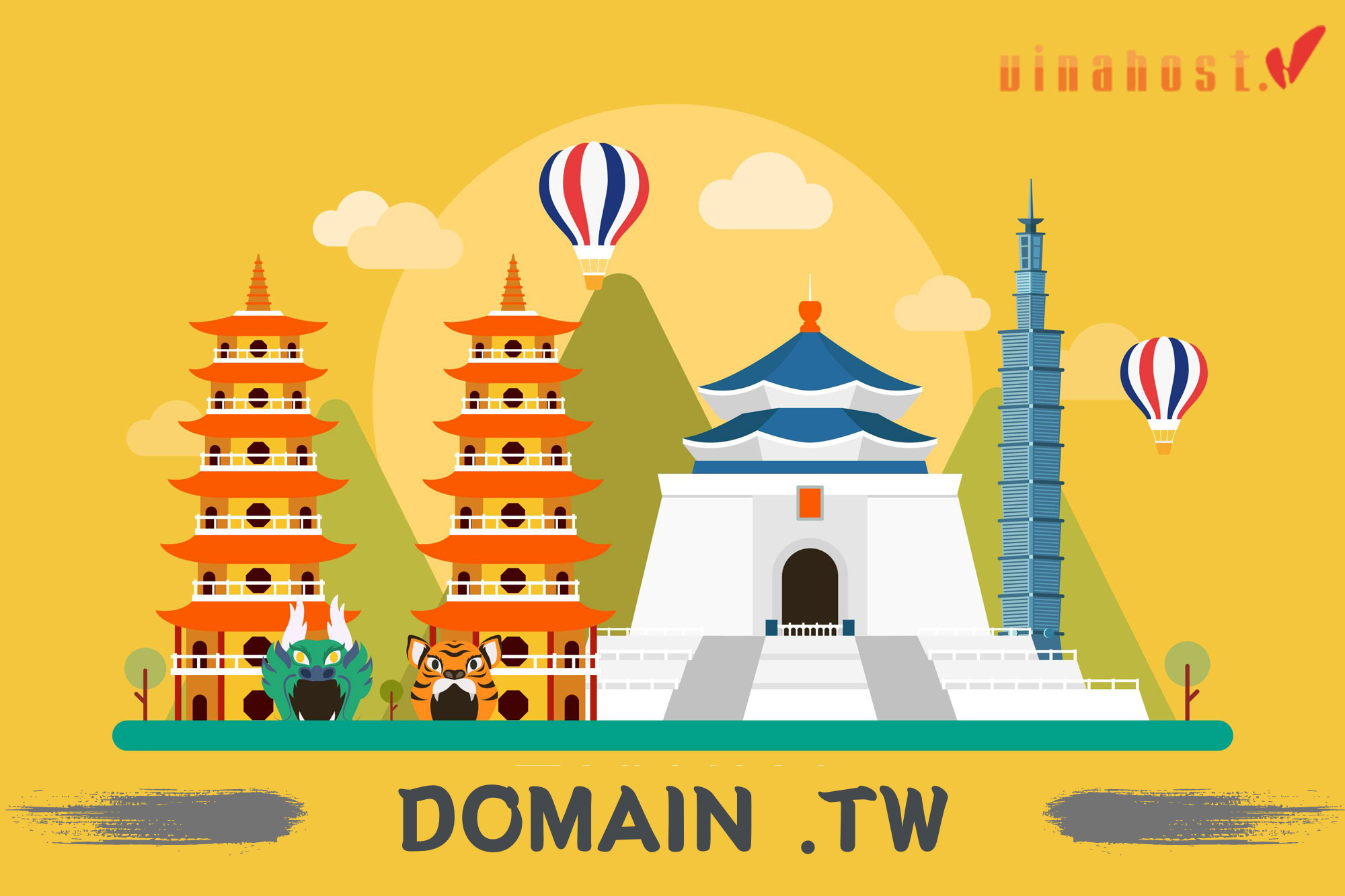What is a Dedicated Server? A dedicated server is a type of remote server that is entirely dedicated to serving the needs of a single client or organization. Dedicated servers are commonly used for hosting high-traffic websites, applications that require significant computational power or resources, gaming servers, large databases, and other resource-intensive tasks. Let’s find out through the following article of VinaHost.
1. What is a Dedicated Server?
A dedicated server is a type of hosting service where an entire physical server is leased to a single client or organization. In this arrangement, the client has exclusive use and control over all the resources of the server, including CPU, RAM, storage, and bandwidth.
Unlike shared hosting, where multiple users share resources on the same server, a dedicated server offers greater performance, reliability, and security because all the server resources are dedicated solely to the needs of one client.

Dedicated servers are commonly used by businesses or individuals with high-traffic websites, applications, or specific hosting requirements that necessitate robust performance and customization options. They offer flexibility in terms of software, operating system, and configurations, allowing clients to tailor the server environment to their exact specifications. Additionally, dedicated servers provide enhanced security features since the client has full control over access permissions and can implement their own security measures.
Dedicated servers are ideal for applications or websites that require high levels of performance, reliability, security, and customization options. However, they typically come at a higher cost compared to shared hosting or virtual private servers (VPS) due to the exclusive access to resources and the infrastructure required to support the dedicated hardware.
Also Read: What is a Server? Understanding the Backbone of Modern Technology
2. How Does a Dedicated Server Work?
A dedicated server works by providing exclusive access to a physical server machine to a single client or organization. Here’s a breakdown of how it works:
- Server Provisioning: The hosting provider sets up a physical server machine with the necessary hardware components such as CPU, RAM, storage drives, and network connectivity.
- Client Leasing: A client leases the entire server from the hosting provider. This client could be a business, organization, or individual with specific hosting requirements.
- Server Configuration: The client configures the server according to their needs. This includes choosing the operating system, installing software applications, setting up security measures, and configuring network settings.
- Exclusive Resource Allocation: The client has exclusive access to all the resources of the server, including CPU, RAM, storage, and bandwidth. This means that the client’s applications or websites hosted on the server have full access to the available computing power and memory without sharing with other users.
- Data Management: The client is responsible for managing their data on the dedicated server. This includes storing files, databases, and other content, as well as implementing backup and recovery strategies to safeguard against data loss.
- Performance Optimization: The client can optimize the performance of their applications or websites by fine-tuning the server configurations, scaling resources up or down as needed, and implementing caching and optimization techniques.
- Security Measures: The client is responsible for securing the dedicated server against potential threats and vulnerabilities. This includes installing firewalls, intrusion detection systems, antivirus software, and regularly updating software patches to mitigate security risks.
- Monitoring and Maintenance: The client monitors the server’s performance, uptime, and resource utilization to ensure smooth operation. They are also responsible for performing routine maintenance tasks such as software updates, hardware upgrades, and troubleshooting issues that may arise.
A dedicated server provides a high degree of control, customization, and performance to the client, making it an ideal choice for businesses, organizations, or individuals with specific hosting requirements.
Also Read: What is a Web Server & How Web Servers Work?
3. Types of Dedicated Servers
3.1. Entry-Level Servers
Entry-level dedicated servers are designed for individuals, small businesses, startups, or anyone who requires basic server resources without the need for high-end specifications or advanced features. These servers typically offer sufficient performance for hosting small to medium-sized websites, applications, email servers, or development environments. Here are some common characteristics of entry-level dedicated servers:
- Basic Hardware Specifications: Entry-level servers usually feature modest hardware specifications compared to high-end servers. They may have lower-tier CPUs, moderate amounts of RAM, and standard hard drives or entry-level SSDs for storage.
- Affordability: Entry-level dedicated servers are priced competitively, making them an economical choice for budget-conscious users or small businesses looking to establish an online presence without breaking the bank.
- Limited Scalability: While entry-level servers offer enough resources for basic hosting needs, they may have limited scalability options compared to higher-tier servers. Upgrading hardware components or scaling resources may be possible but may have limitations compared to more expensive options.
- Managed Services: Some entry-level dedicated server plans may include managed services such as basic server management, monitoring, and technical support. This can be beneficial for users who require assistance with server setup, configuration, and maintenance.
- Standard Connectivity: Entry-level servers typically come with standard network connectivity options such as Gigabit Ethernet ports. Advanced networking features or high-bandwidth options may not be included in these plans.
- Single Processor Configuration: Entry-level servers commonly feature single-processor configurations, which provide sufficient processing power for most basic hosting tasks. Dual-processor configurations are usually reserved for higher-tier servers.
- Basic Security Features: Entry-level dedicated servers often include basic security features such as firewall protection, DDoS mitigation, and intrusion detection systems to help safeguard the server and hosted applications from cyber threats.
Entry-level dedicated servers offer an affordable hosting solution for users who require dedicated resources and control over their server environment but do not need the advanced features or high-performance capabilities of premium server offerings.
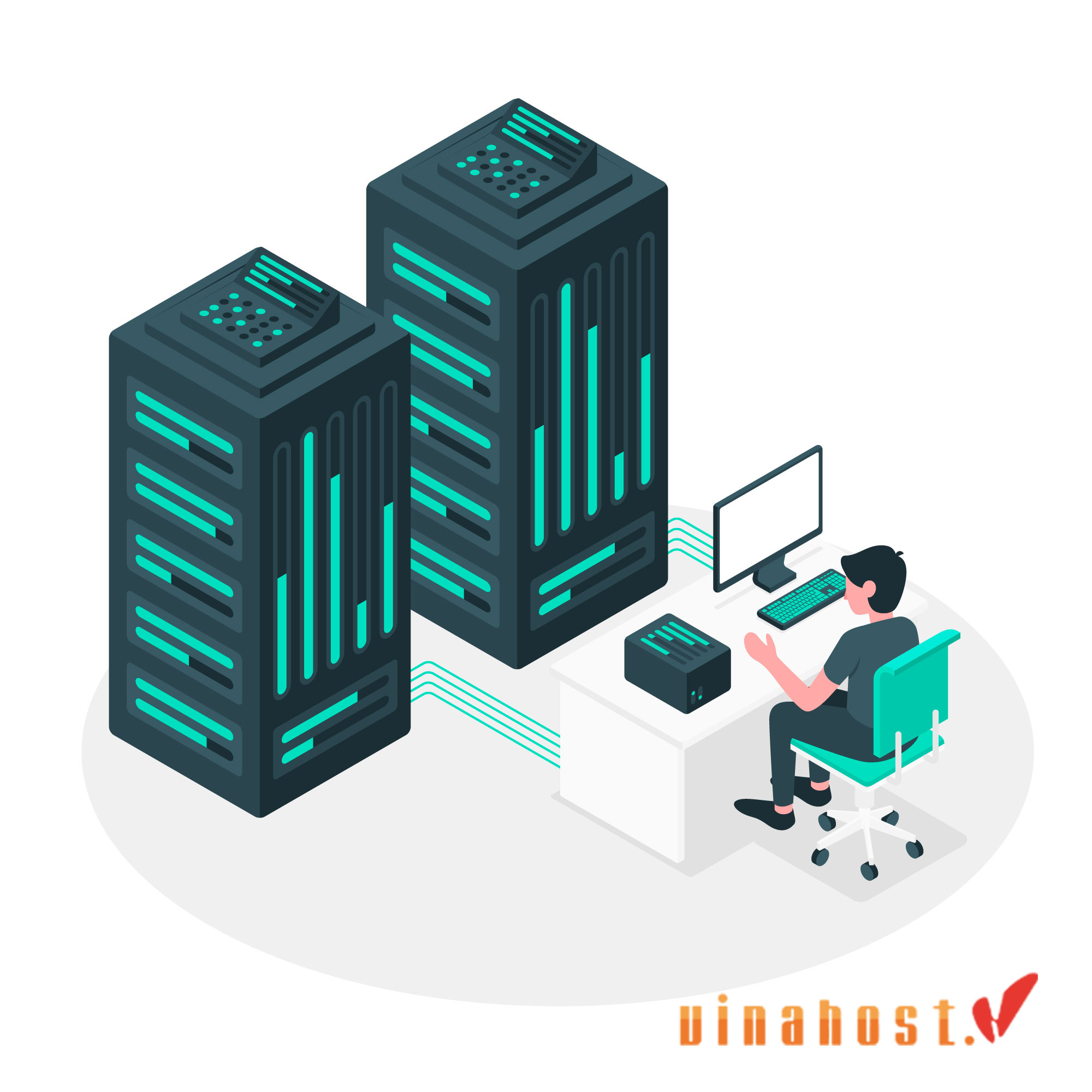
3.2. Mid-Range Servers
Mid-range dedicated servers cater to businesses, organizations, or individuals with moderate to demanding hosting requirements. These servers offer a balance between performance, scalability, and affordability, making them suitable for a wide range of applications. Here are some key characteristics of mid-range dedicated servers:
- Enhanced Hardware Specifications: Mid-range servers feature more powerful hardware compared to entry-level servers. They typically offer faster CPUs with multiple cores, higher amounts of RAM, and faster storage options such as SSDs or NVMe drives.
- Scalability Options: Mid-range dedicated servers provide greater scalability compared to entry-level servers. Users can often upgrade hardware components such as CPU, RAM, storage, and network connectivity to accommodate growing workloads or increased traffic.
- Cost-Effective Performance: Mid-range servers offer a good balance between performance and cost-effectiveness. They provide sufficient resources to handle medium to large-sized websites, databases, applications, or virtualization workloads without the high price tag associated with premium server options.
- Managed Services: Some mid-range dedicated server plans may include managed services such as proactive monitoring, security updates, and performance optimization. Managed services help streamline server management tasks and ensure optimal performance and security.
- Advanced Connectivity: Mid-range servers often come with advanced connectivity options such as multiple Gigabit Ethernet ports, 10 Gigabit Ethernet options, or support for high-speed networking technologies like InfiniBand or RDMA (Remote Direct Memory Access).
- Multiple Processor Configurations: Mid-range servers may feature single or dual-processor configurations, providing users with increased processing power and performance scalability. Dual-processor servers are commonly used for applications that require high compute power or multitasking capabilities.
- Advanced Security Features: Mid-range dedicated servers include advanced security features to protect against cyber threats and unauthorized access. These may include advanced firewall configurations, intrusion detection systems, SSL certificate management, and secure remote access options.
Mid-range dedicated servers offer a compelling hosting solution for businesses, e-commerce websites, high-traffic applications, gaming servers, and other demanding workloads that require reliable performance, scalability, and robust security features.
3.3. Enterprise Servers
Enterprise servers are high-end dedicated server solutions designed to meet the demanding requirements of large businesses, corporations, government agencies, and organizations with extensive computing needs. These servers offer top-tier performance, scalability, reliability, and security features to support mission-critical workloads, complex applications, big data analytics, and enterprise-level infrastructure. Here are some key characteristics of enterprise servers:
- Powerful Hardware Specifications: Enterprise servers are equipped with powerful hardware components, including the latest generation of multi-core processors (such as Intel Xeon or AMD EPYC processors), large amounts of high-speed RAM, and enterprise-grade storage solutions such as SSDs, NVMe drives, or RAID arrays.
- High Performance: Enterprise servers deliver exceptional performance to handle compute-intensive workloads, massive data processing, real-time analytics, virtualization, and high-traffic websites or applications. They are optimized for performance-critical tasks and offer low-latency access to resources.
- Scalability and Redundancy: Enterprise servers provide extensive scalability options to accommodate growing business needs and workload demands. They support expansion through hardware upgrades, additional storage capacity, and clustering or virtualization technologies. Redundant components such as power supplies, network interfaces, and storage controllers ensure high availability and fault tolerance.
- Advanced Management and Monitoring: Enterprise servers feature comprehensive management tools and monitoring capabilities to facilitate centralized administration, configuration management, performance tuning, and resource optimization. They support industry-standard management protocols such as IPMI (Intelligent Platform Management Interface) and integration with enterprise management platforms.
- Enterprise-grade Security Features: Security is a top priority for enterprise servers. They incorporate advanced security features and compliance measures to protect sensitive data, mitigate cyber threats, and ensure regulatory compliance. These include hardware-based encryption, secure boot, firmware integrity verification, secure remote management, and advanced threat detection technologies.
- Advanced Networking Capabilities: Enterprise servers offer advanced networking capabilities to support high-speed connectivity, low-latency communication, and efficient data transfer within complex IT environments. They may include support for 10 Gigabit Ethernet, 40/100 Gigabit Ethernet, fiber channel, converged networking, and software-defined networking (SDN) technologies.
- Reliability and Service Level Agreements (SLAs): Enterprise servers are built for reliability and uptime. They feature redundant components, fault-tolerant architectures, and comprehensive warranty and support options. Hosting providers often offer SLAs (Service Level Agreements) guaranteeing a certain level of uptime and support response times.
- Dedicated Support and Consulting Services: Enterprise server solutions come with dedicated technical support from experienced engineers, architects, and consultants. This includes proactive monitoring, troubleshooting, performance optimization, and personalized assistance to address complex technical challenges and business requirements.
Enterprise servers provide a robust and scalable infrastructure foundation for organizations that demand exceptional performance, reliability, scalability, and security for their critical workloads and business operations.
3.4. Specialized Servers
Specialized servers refer to dedicated server solutions tailored to meet specific needs, requirements, or niche applications. These servers are designed with specialized hardware configurations, software optimizations, and unique features to address specific use cases, industries, or workloads. Here are some common types of specialized servers:
- Game Servers: Game servers are optimized for hosting online multiplayer games, providing low-latency gameplay, high performance, and reliable connectivity for players. These servers often feature powerful CPUs, high-speed RAM, fast storage, and specialized networking hardware to support real-time gaming experiences.
- Media Servers: Media servers are designed for streaming, transcoding, storing, and delivering multimedia content such as video, audio, and live broadcasts. They may include hardware acceleration for encoding and decoding media formats, large storage capacities, and high-speed networking for content delivery.
- Database Servers: Database servers are optimized for hosting databases and processing data-intensive workloads. They feature high-performance storage subsystems, large amounts of RAM for caching, and efficient database management systems (DBMS) such as MySQL, PostgreSQL, Oracle, or Microsoft SQL Server.
- Storage Servers: Storage servers are dedicated to providing large-scale storage capacity for storing, archiving, and managing data. They are equipped with high-capacity hard drives, SSDs, or network-attached storage (NAS) arrays, and may support RAID configurations, data deduplication, and backup/restore capabilities.
- Application Servers: Application servers are designed to host and execute business applications, web applications, and middleware services. They provide the necessary computing resources, runtime environments, and middleware components to support application deployment, scalability, and performance.
- GPU Servers: GPU servers are equipped with high-performance graphics processing units (GPUs) to accelerate parallel computing tasks such as machine learning, artificial intelligence (AI), scientific simulations, and 3D rendering. These servers enable GPU-accelerated computing for computationally intensive workloads.
- High-Performance Computing (HPC) Servers: HPC servers are optimized for performing complex scientific calculations, simulations, modeling, and data analysis tasks. They feature multi-core CPUs, high-speed interconnects (such as InfiniBand), and large memory capacities to achieve high levels of parallel processing performance.
- Blockchain Nodes: Blockchain servers are dedicated to running blockchain networks, hosting nodes, and validating transactions. They require specialized software configurations, secure storage for cryptographic keys, and robust networking capabilities to participate in distributed ledger networks such as Bitcoin, Ethereum, or Hyperledger.
- IoT Edge Servers: IoT edge servers process, analyze, and manage data generated by Internet of Things (IoT) devices at the network edge. They offer low-latency processing, edge computing capabilities, and support for IoT protocols and connectivity standards.
- Security Servers: Security servers are dedicated to implementing security measures such as firewalls, intrusion detection/prevention systems (IDS/IPS), virtual private networks (VPNs), and encryption services. They protect networks, applications, and data from cyber threats and unauthorized access.
Specialized servers cater to specific industries, applications, or technical requirements, providing tailored solutions to address the unique needs and challenges of diverse use cases and workloads.
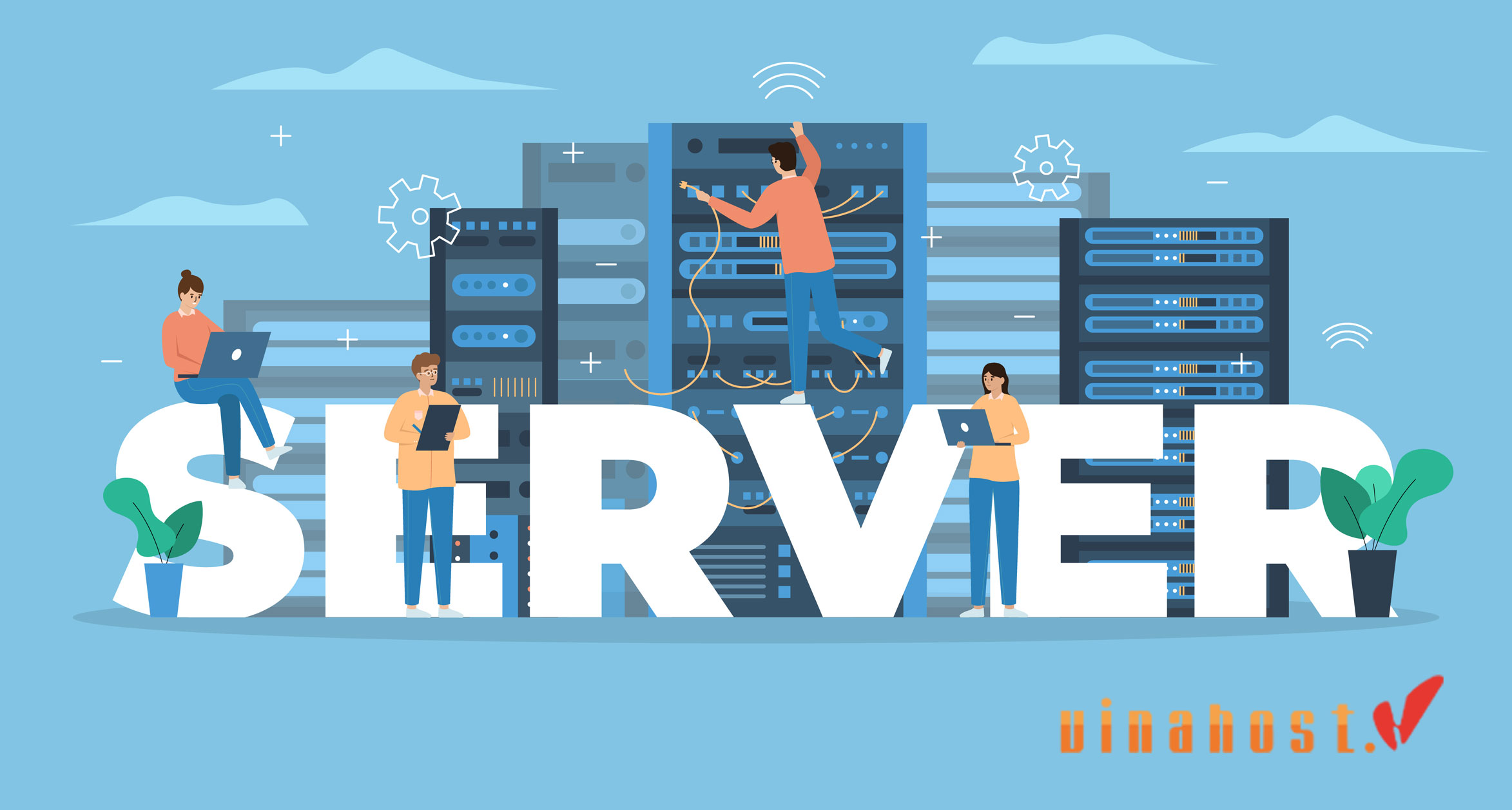
Also Read: What is VPS? | Unveiling the Power Behind Virtual Private Servers
4. Key Features of a Dedicated Server
Key features of a dedicated server typically include:
- Exclusive Resource Allocation: Dedicated servers provide exclusive access to all server resources (CPU, RAM, storage, bandwidth) for a single client or organization, ensuring consistent performance and reliability.
- Customizable Configurations: Clients have the flexibility to customize server configurations according to their specific requirements, including choice of operating system, hardware components, software applications, and network settings.
- High Performance: Dedicated servers offer high-performance computing capabilities to handle demanding workloads, complex applications, high-traffic websites, and data-intensive tasks with low latency and fast response times.
- Scalability: Dedicated servers are scalable, allowing clients to easily upgrade or expand server resources as their needs grow. This scalability ensures that the server can accommodate increasing workloads, traffic spikes, or resource demands over time.
- Reliability and Uptime: Dedicated servers are known for their reliability and uptime, providing a stable hosting environment for mission-critical applications, websites, and services. Redundant components, backup power supplies, and robust infrastructure contribute to high availability.
- Security Features: Dedicated servers include advanced security features to protect against cyber threats, unauthorized access, and data breaches. These may include firewalls, intrusion detection/prevention systems (IDS/IPS), SSL/TLS encryption, secure remote access options, and regular security updates.
- Remote Management Tools: Dedicated servers offer remote management capabilities, allowing clients to monitor, configure, and control the server remotely. Remote management tools provide access to server hardware, operating system settings, and administrative tasks from anywhere with an internet connection.
- Data Center Facilities: Dedicated servers are hosted in secure data center facilities equipped with advanced infrastructure, redundant power supplies, cooling systems, and physical security measures to protect servers and ensure continuous operation.
- Service Level Agreements (SLAs): Hosting providers often offer SLAs (Service Level Agreements) guaranteeing a certain level of uptime, performance, and support response times for dedicated server hosting services. SLAs provide assurance of service quality and availability.
Overall, dedicated servers offer a robust and reliable hosting solution for businesses, organizations, and individuals with specific hosting requirements, providing full control, customization options, and high-performance computing resources for various applications and workloads.
5. Advantages of a Dedicated Server
Dedicated servers offer several advantages compared to other hosting solutions like shared hosting or virtual private servers (VPS). Here are some key advantages of dedicated servers:
- Exclusive Resources: Dedicated servers provide exclusive access to all the resources of the server, including CPU, RAM, storage, and bandwidth. This ensures consistent performance and reliability since the resources are not shared with other users.
- Customization: Clients have full control over the server environment and can customize configurations according to their specific requirements. They can choose the operating system, hardware components, software applications, and network settings to optimize performance and security.
- High Performance: Dedicated servers offer high-performance computing capabilities to handle demanding workloads, complex applications, and high-traffic websites with fast response times and low latency. The dedicated resources ensure that the server can handle peak loads and scale as needed.
- Scalability: Dedicated servers are scalable, allowing clients to easily upgrade or expand server resources as their needs grow. This scalability ensures that the server can accommodate increasing workloads, traffic spikes, or resource demands over time without disruption.
- Reliability and Uptime: Dedicated servers are known for their reliability and uptime, providing a stable hosting environment for mission-critical applications, websites, and services. Redundant components, backup power supplies, and robust infrastructure contribute to high availability.
- Security: Dedicated servers offer enhanced security features to protect against cyber threats, unauthorized access, and data breaches. Clients can implement advanced security measures such as firewalls, intrusion detection/prevention systems (IDS/IPS), SSL/TLS encryption, and secure remote access options to safeguard their data and applications.
- Flexibility: Dedicated servers offer flexibility in terms of software, applications, and configurations. Clients can install and run any software or application they need, customize server settings, and control access permissions to meet their specific requirements.
- Remote Management: Dedicated servers provide remote management capabilities, allowing clients to monitor, configure, and control the server remotely from anywhere with an internet connection. Remote management tools facilitate server administration, troubleshooting, and maintenance tasks.
- Data Control: With a dedicated server, clients have full control over their data and privacy. They can implement data security measures, backup strategies, and compliance policies to protect sensitive information and ensure regulatory compliance.
- Support: Dedicated server hosting typically includes 24/7 technical support from experienced system administrators or support engineers. Clients can receive prompt assistance with server setup, maintenance, troubleshooting, and resolving technical issues whenever needed.
Dedicated servers offer a reliable, customizable, and high-performance hosting solution for businesses, organizations, and individuals with specific hosting requirements, providing full control, security, and scalability for various applications and workloads.

Also Read: Maximizing Efficiency and Performance: What is Blade Server?
6. Choosing the Right Dedicated Server
Choosing the right dedicated server involves considering several factors to ensure it meets your specific requirements and budget. Here’s a step-by-step guide to help you choose the right dedicated server:
- Assess Your Needs: Start by identifying your hosting requirements, including the type of applications or workloads you’ll be hosting, expected traffic levels, resource demands, and any special requirements such as security or compliance.
- Define Budget: Determine your budget for dedicated server hosting, considering factors such as upfront costs, recurring monthly fees, additional services (e.g., managed services, technical support), and potential upgrade costs.
- Evaluate Hardware Specifications: Review the hardware specifications offered by different dedicated server providers, including CPU (cores, clock speed), RAM (memory capacity, type), storage (HDD, SSD, RAID configurations), and network connectivity (bandwidth, port speed).
- Consider Scalability: Choose a dedicated server solution that offers scalability to accommodate future growth and increasing resource demands. Look for providers that allow easy upgrades or scaling options for CPU, RAM, storage, and bandwidth as needed.
- Assess Reliability and Uptime: Evaluate the reliability and uptime guarantees provided by dedicated server hosting providers. Look for providers with robust infrastructure, redundant components, backup power supplies, and high availability SLAs (Service Level Agreements).
- Review Security Features: Consider the security features included in the dedicated server hosting plans, such as firewall protection, DDoS mitigation, intrusion detection/prevention systems (IDS/IPS), SSL/TLS encryption, and secure remote access options. Ensure that the hosting provider implements industry-standard security measures to protect your data and applications.
- Check Data Center Facilities: Assess the data center facilities and network infrastructure of the dedicated server hosting provider. Look for providers with state-of-the-art data centers, redundant network connectivity, advanced cooling systems, physical security measures, and compliance certifications (e.g., SSAE 18, ISO 27001).
- Evaluate Management and Support: Consider the level of management and support offered by the dedicated server hosting provider. Determine whether you need fully managed services, self-managed options, or somewhere in between. Review the provider’s technical support options, response times, and SLAs for assistance with server setup, maintenance, and troubleshooting.
- Read Reviews and Testimonials: Research customer reviews, testimonials, and ratings of dedicated server hosting providers to gauge their reputation, reliability, and customer satisfaction. Look for feedback on performance, support quality, uptime, and overall service experience.
- Compare Pricing and Plans: Compare pricing and features of dedicated server hosting plans from different providers to find the best value for your budget and requirements. Pay attention to any additional fees, contract terms, billing cycles, and discounts or promotions offered by providers.
By following these steps and carefully evaluating your options, you can choose the right dedicated server hosting solution that meets your needs for performance, reliability, security, scalability, and support, ensuring a seamless hosting experience for your applications and workloads.
Best Dedicated Server VietNam – Free IPv6 + SSL
Additionally, we also provide:
7. Future Trends in Dedicated Servers
Predicting future trends in dedicated servers involves considering advancements in technology, changes in market demands, and evolving industry practices. Here are some potential future trends in dedicated servers:
- Increased Demand for Edge Computing: With the proliferation of Internet of Things (IoT) devices and the need for low-latency processing, there will likely be a greater demand for edge computing solutions. Dedicated servers located at the network edge can provide compute resources closer to end-users or devices, improving performance and reducing latency for real-time applications.
- Rise of Hybrid Cloud Deployments: Organizations may increasingly adopt hybrid cloud architectures, combining dedicated servers with cloud services to leverage the benefits of both environments. Dedicated servers offer control, customization, and performance for specific workloads, while cloud services provide scalability, flexibility, and cost-effectiveness for dynamic or unpredictable workloads.
- Focus on Security and Compliance: As cybersecurity threats continue to evolve, there will be a growing emphasis on security and compliance measures for dedicated servers. Hosting providers may implement advanced security features, encryption technologies, and compliance frameworks to protect data, mitigate risks, and ensure regulatory compliance for sensitive workloads.
- Integration of AI and Automation: AI-driven technologies and automation tools may play a significant role in managing and optimizing dedicated server environments. Predictive analytics, machine learning algorithms, and automated provisioning tools can help optimize resource allocation, improve performance, and streamline server management tasks.
- Enhanced Performance and Efficiency: Advancements in hardware technology, such as faster CPUs, higher-density storage, and more efficient cooling systems, will continue to improve the performance and efficiency of dedicated servers. Providers may offer servers with higher core counts, faster RAM, and NVMe SSDs to meet the demands of increasingly resource-intensive applications.
- Focus on Sustainability: There may be a greater focus on sustainability and energy efficiency in dedicated server hosting. Hosting providers may invest in renewable energy sources, energy-efficient hardware, and data center cooling technologies to reduce environmental impact and lower operational costs.
- Containerization and Microservices: Containerization technologies such as Docker and Kubernetes may gain popularity for deploying and managing applications on dedicated servers. Containers and microservices architectures offer scalability, portability, and resource isolation, enabling efficient utilization of server resources and streamlined application deployment.
- Edge AI and IoT Integration: Dedicated servers at the network edge may incorporate AI capabilities to process and analyze data from IoT devices in real-time. Edge AI algorithms can enable intelligent decision-making, predictive maintenance, and automated responses at the edge of the network, reducing reliance on centralized cloud infrastructure.
- Blockchain and Distributed Ledger Technologies: Dedicated servers may play a role in hosting blockchain nodes, validating transactions, and supporting distributed ledger technologies. As blockchain applications and decentralized platforms continue to evolve, there may be an increased demand for dedicated server solutions optimized for blockchain workloads.
- Greater Emphasis on Data Privacy and Sovereignty: With growing concerns about data privacy and sovereignty, there may be a shift towards hosting data and applications on dedicated servers in specific geographic regions or jurisdictions with stringent data protection regulations. Hosting providers may offer localized data center facilities and compliance certifications to address these concerns.
Future trends in dedicated servers are likely to be influenced by advancements in technology, evolving business needs, and shifting industry dynamics, driving innovation and adoption of new solutions to meet the demands of modern IT environments.

8. FAQs
8.1. Can I upgrade the resources of my dedicated server in the future?
Yes, in most cases, you can upgrade the resources of your dedicated server in the future. Dedicated server hosting providers typically offer scalability options that allow you to increase or upgrade server resources as your needs grow or change over time. Here are some common resources that can be upgraded:
- CPU: You can often upgrade the CPU (central processing unit) of your dedicated server to a higher-performance model with more cores or faster clock speeds. This can improve processing power and performance for compute-intensive workloads.
- RAM: Upgrading the amount of RAM (random access memory) in your dedicated server can improve performance for memory-intensive applications, databases, and virtualization environments. You can add more RAM modules or replace existing ones with higher-capacity modules.
- Storage: You may have the option to upgrade the storage capacity or type of storage in your dedicated server. This could involve adding more hard disk drives (HDDs) or solid-state drives (SSDs), upgrading to faster storage technologies like NVMe, or implementing RAID configurations for redundancy and performance.
- Bandwidth: Some dedicated server hosting providers offer options to upgrade the network bandwidth or port speed of your server’s network connection. This can increase the amount of data that can be transferred to and from your server, improving network performance and reducing latency.
- Additional Services: In addition to hardware upgrades, you may also have the option to add additional services or features to your dedicated server plan. This could include managed services such as server monitoring, security updates, and technical support, as well as add-on services like backup solutions or content delivery networks (CDNs).
Before upgrading your dedicated server, it’s important to check with your hosting provider to understand the available upgrade options, pricing, and any potential downtime or configuration changes that may be required. Depending on your provider and the specific hardware configuration of your server, the upgrade process may vary, so it’s advisable to consult with your provider’s support team for assistance with planning and executing upgrades.
8.2. What is the difference between a dedicated server and a virtual private server (VPS)?
The main difference between a dedicated server and a virtual private server (VPS) lies in the level of resource isolation and control provided to the user:
Resource Allocation
- Dedicated Server: In a dedicated server hosting environment, the entire physical server is leased to a single client or organization. The client has exclusive access to all the resources of the server, including CPU, RAM, storage, and bandwidth. This means that the client’s applications or websites run on dedicated hardware without sharing resources with other users.
- Virtual Private Server (VPS): In a VPS hosting environment, a physical server is partitioned into multiple virtual servers using virtualization technology. Each VPS operates as an independent virtual machine (VM) with its own dedicated resources, including CPU cores, RAM, storage, and bandwidth. While resources are shared among multiple VPS instances on the same physical server, each VPS is isolated from others and allocated a guaranteed amount of resources.
Control and Customization
- Dedicated Server: Clients have full control over the dedicated server environment, including the choice of operating system, hardware configurations, software installations, and server settings. They can customize the server according to their specific requirements and have complete administrative access to manage the server.
- Virtual Private Server (VPS): Clients have administrative access to their VPS instance and can customize the server environment to some extent, including installing and configuring software applications, managing user accounts, and adjusting server settings. However, the level of control may be limited compared to a dedicated server, as the underlying hardware and hypervisor are shared with other VPS instances.
Performance and Scalability
- Dedicated Server: Dedicated servers offer high-performance computing resources and scalability to handle demanding workloads, high-traffic websites, and resource-intensive applications. Clients can easily upgrade or expand server resources as needed to accommodate growing requirements.
- Virtual Private Server (VPS): VPS instances provide dedicated resources to each user, offering predictable performance and scalability for moderate to high-traffic websites, small to medium-sized applications, and development environments. While VPS instances may not offer the same level of performance as dedicated servers, they can be cost-effective and scalable solutions for many use cases.
Cost and Pricing
- Dedicated Server: Dedicated servers are typically more expensive than VPS hosting due to the exclusive access to hardware resources and higher infrastructure costs. Pricing is based on factors such as server specifications, bandwidth usage, and additional services.
- Virtual Private Server (VPS): VPS hosting is generally more affordable than dedicated servers, as resources are shared among multiple users on the same physical server. Pricing is often based on the allocated resources (CPU cores, RAM, storage) and may offer a range of plans with different levels of resources and features.
The choice between a dedicated server and a virtual private server depends on factors such as performance requirements, scalability needs, budget constraints, and the level of control and customization desired by the user. Dedicated servers offer maximum performance, control, and resource isolation, while VPS hosting provides a cost-effective and scalable solution with dedicated resources for individual users.

8.3. Can I host multiple websites on a single dedicated server?
Yes, you can host multiple websites on a single dedicated server. Dedicated servers offer the flexibility and resources to accommodate multiple websites or web applications, making them suitable for hosting multiple domains or managing a portfolio of websites. Here are a few common methods for hosting multiple websites on a dedicated server:
- Virtual Hosts: With virtual hosting, also known as shared hosting, you can configure the dedicated server to serve multiple websites from the same IP address. Using a web server software such as Apache or Nginx, you can set up virtual hosts or server blocks to define separate configurations for each website. Each website can have its own domain name, document root, and configuration settings, allowing them to coexist on the same server.
- Control Panel Software: Many dedicated server hosting providers offer control panel software such as cPanel, Plesk, or DirectAdmin, which simplifies the process of managing multiple websites on a single server. These control panels provide graphical interfaces for creating and managing website accounts, domains, email accounts, databases, and other server resources. They also offer features for monitoring server performance, security, and backups.
- Containerization: Containerization technologies such as Docker can be used to host multiple websites on a single dedicated server in isolated environments. Each website can run within its own container, with its own dependencies and configurations, ensuring separation and security. Container orchestration platforms like Kubernetes can help manage and scale multiple containers across the dedicated server infrastructure.
- Web Hosting Control Panels: Dedicated server hosting providers may offer web hosting control panels such as Webmin, ISPConfig, or Ajenti, which provide similar features to commercial control panel software. These control panels allow you to create and manage websites, domains, email accounts, FTP accounts, and databases through a web-based interface.
- Custom Configuration: For advanced users and system administrators, it’s possible to manually configure and manage multiple websites on a dedicated server using command-line tools and configuration files. By configuring the web server software, DNS settings, and virtual host configurations, you can host multiple websites with full control and customization options.
Hosting multiple websites on a single dedicated server offers cost-effective and efficient resource utilization, allowing you to consolidate your web hosting infrastructure and manage multiple websites from a single server environment. Depending on your specific requirements and technical expertise, you can choose the method that best suits your needs for hosting and managing multiple websites on a dedicated server.
8.4. Do I need technical expertise to manage a dedicated server?
Managing a dedicated server typically requires a certain level of technical expertise due to the responsibilities involved in configuring, securing, and maintaining the server environment. While dedicated server hosting providers often offer managed services and support options to assist with server management tasks, having some technical knowledge can be beneficial for effectively managing a dedicated server. Here are some key aspects of dedicated server management and the technical skills required:
- Server Setup and Configuration: Setting up a dedicated server involves installing and configuring the operating system, web server software (such as Apache, Nginx), database servers (such as MySQL, PostgreSQL), and other necessary software components. You’ll need basic knowledge of server operating systems (e.g., Linux, Windows), command-line interface (CLI) commands, and server administration tasks.
- Security Hardening: Securing a dedicated server requires implementing best practices for server security, including configuring firewalls, setting up intrusion detection/prevention systems (IDS/IPS), enabling SSL/TLS encryption, and applying regular security updates and patches. You’ll need knowledge of cybersecurity principles, network security configurations, and server hardening techniques to protect against cyber threats and vulnerabilities.
- Performance Optimization: Optimizing server performance involves monitoring resource utilization, identifying bottlenecks, and fine-tuning server configurations to improve efficiency and responsiveness. You’ll need an understanding of server monitoring tools, performance metrics, and optimization techniques for CPU, memory, disk I/O, and network bandwidth.
- Backup and Disaster Recovery: Implementing backup and disaster recovery strategies is essential for safeguarding data and ensuring business continuity in case of data loss, hardware failures, or other emergencies. You’ll need to set up backup routines, automate backup schedules, and test recovery procedures to restore data and services effectively.
- Troubleshooting and Maintenance: Troubleshooting server issues and performing routine maintenance tasks are part of managing a dedicated server. You’ll need troubleshooting skills to diagnose and resolve common server problems, such as server crashes, performance issues, application errors, and network connectivity issues. Regular maintenance tasks include applying software updates, monitoring server logs, and performing hardware checks.
While technical expertise is valuable for managing a dedicated server, it’s possible to learn and acquire the necessary skills through self-study, online resources, tutorials, and training courses. Additionally, many dedicated server hosting providers offer managed services, technical support, and assistance with server management tasks for clients who may not have the expertise or resources to manage servers independently.
By leveraging managed services or support options, you can ensure that your dedicated server is properly configured, secured, and maintained while focusing on your core business objectives.
8.5. Can I install any software or application on a dedicated server?
Yes, you can typically install any software or application on a dedicated server, as long as it is compatible with the server’s operating system and hardware specifications. Dedicated servers offer full control and flexibility, allowing you to install and run a wide range of software applications, tools, and services to meet your specific requirements and business needs.
Here are some common types of software and applications that can be installed on a dedicated server:
- Web Server Software: Dedicated servers are commonly used to host websites and web applications. You can install popular web server software such as Apache HTTP Server, Nginx, Microsoft Internet Information Services (IIS), or LiteSpeed Web Server to serve web content, host dynamic websites, and run web applications.
- Database Servers: Dedicated servers are suitable for hosting database servers to store and manage data for applications, websites, and business operations. You can install database management systems (DBMS) such as MySQL, PostgreSQL, MongoDB, Microsoft SQL Server, or Oracle Database to handle relational or NoSQL databases.
- Content Management Systems (CMS): You can install content management systems such as WordPress, Joomla, Drupal, or Magento on a dedicated server to create, manage, and publish websites or online stores. CMS platforms provide templates, plugins, and tools for building and customizing websites without extensive programming knowledge.
- Development Tools and Environments: Dedicated servers are ideal for hosting development environments and tools for software development projects. You can install programming languages (e.g., PHP, Python, Ruby), development frameworks (e.g., Laravel, Django, Ruby on Rails), version control systems (e.g., Git, Subversion), and development IDEs (e.g., Visual Studio Code, JetBrains IntelliJ IDEA) to support development workflows.
- Enterprise Applications: Dedicated servers can host a variety of enterprise applications and business software for internal use or customer-facing services. This includes customer relationship management (CRM) systems, enterprise resource planning (ERP) software, project management tools, collaboration platforms, and business intelligence (BI) solutions.
- Email Servers: Dedicated servers can be configured to host email servers for managing email communication within an organization or hosting email services for multiple domains. You can install mail server software such as Postfix, Sendmail, Exim, or Microsoft Exchange Server to handle email delivery, routing, and storage.
- Security Software: Dedicated servers can run security software and tools to protect against cyber threats, monitor network activity, and enforce security policies. This includes antivirus software, intrusion detection/prevention systems (IDS/IPS), firewalls, VPN servers, and security information and event management (SIEM) solutions.
- Custom Applications: In addition to off-the-shelf software, you can develop and deploy custom applications, scripts, or services on a dedicated server to address specific business requirements or workflows. This may involve customizing existing software or building bespoke solutions tailored to your organization’s needs.
The ability to install and run any software or application on a dedicated server provides flexibility, control, and customization options for hosting various workloads, services, and business applications. As long as the software is compatible with the server’s operating system, hardware specifications, and resource requirements, you can leverage the full capabilities of a dedicated server to support your business objectives.
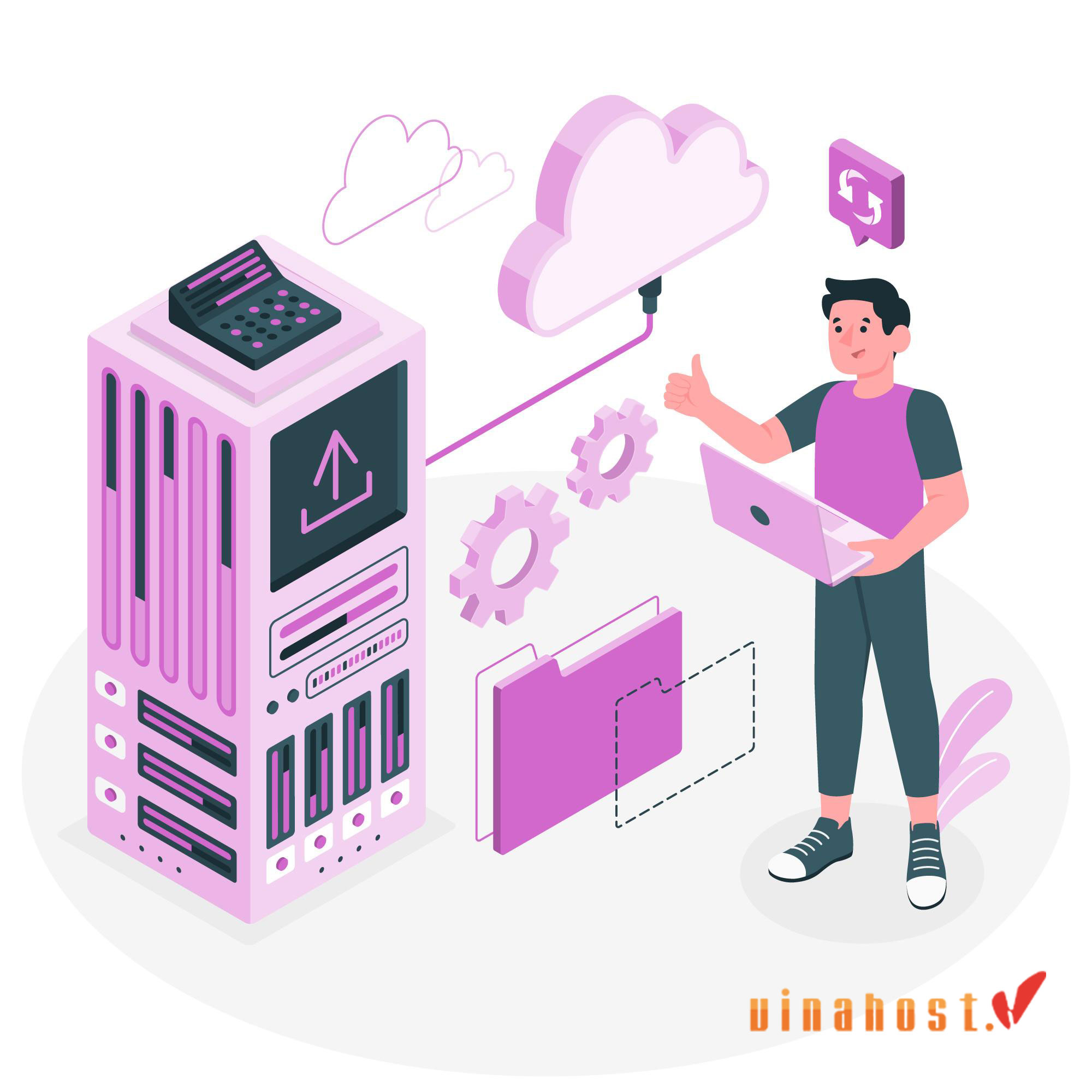
8.6. How is a dedicated server different from shared hosting?
Dedicated server hosting and shared hosting are two distinct types of web hosting services, each offering different levels of resources, control, and performance. Here’s how they differ:
Resource Allocation:
- Dedicated Server: In dedicated server hosting, you lease an entire physical server that is dedicated exclusively to your website(s) or applications. This means you have full access to all the server’s resources, including CPU, RAM, storage, and bandwidth, without sharing them with other users.
- Shared Hosting: In shared hosting, multiple websites are hosted on the same physical server and share its resources. This includes CPU, RAM, storage space, and bandwidth. Since resources are shared among multiple users, the performance of your website(s) may be affected by the traffic and resource usage of other websites on the same server.
Control and Customization:
- Dedicated Server: With a dedicated server, you have full control over the server environment and can customize it according to your specific requirements. You can choose the operating system, hardware configurations, software applications, and server settings. This level of control allows for greater flexibility and customization options.
- Shared Hosting: In shared hosting, you have limited control over the server environment, as the hosting provider manages the server’s configuration and resources. You typically have access to a control panel (e.g., cPanel, Plesk) to manage your website(s), email accounts, and other hosting features, but you cannot customize server-level settings or install certain software applications.
Performance and Reliability
- Dedicated Server: Dedicated servers offer high performance, reliability, and uptime since you have exclusive access to the server’s resources. This ensures consistent performance and responsiveness for your website(s) or applications, even during peak traffic periods.
- Shared Hosting: Shared hosting may experience performance fluctuations and reduced reliability due to resource contention among multiple users. If one website on the shared server experiences a sudden spike in traffic or resource usage, it can impact the performance of other websites hosted on the same server.
Scalability
- Dedicated Server: Dedicated servers offer scalability, allowing you to easily upgrade or expand server resources as your website(s) or applications grow. You can add more CPU cores, RAM, storage, and bandwidth to accommodate increasing traffic and resource demands.
- Shared Hosting: Shared hosting may have limited scalability options since resources are shared among multiple users. As your website(s) or traffic grow, you may encounter limitations in terms of performance, storage space, and bandwidth, requiring you to upgrade to a more scalable hosting solution.
Security
- Dedicated Server: Dedicated servers provide enhanced security and isolation since you are the sole user of the server. You have control over security configurations, access permissions, and software installations, allowing you to implement robust security measures to protect your website(s) and data.
- Shared Hosting: Shared hosting may have security implications since multiple users share the same server resources. If one website on the shared server is compromised or vulnerable to security threats, it can potentially affect the security of other websites hosted on the same server. However, reputable shared hosting providers implement security measures to mitigate these risks.
The choice between dedicated server hosting and shared hosting depends on factors such as performance requirements, control and customization needs, scalability, and budget constraints. Dedicated server hosting offers maximum control, performance, and scalability but comes at a higher cost, while shared hosting provides a cost-effective solution for smaller websites with lower resource requirements.
Also Read: Unveiling the Web’s Hidden Foundation: What is Web Hosting?
8.7. Is a dedicated server suitable for small businesses?
A dedicated server can be suitable for small businesses depending on their specific requirements, budget, and technical expertise. While dedicated servers offer numerous benefits, they may not always be the ideal solution for every small business. Here are some factors to consider when determining if a dedicated server is suitable for a small business:
- Resource Requirements: Small businesses with resource-intensive applications, high-traffic websites, or specialized computing needs may benefit from the dedicated resources and performance capabilities of a dedicated server. If the business requires consistent access to computing resources without sharing them with other users, a dedicated server can provide the necessary performance and reliability.
- Control and Customization: Dedicated servers offer full control and customization options, allowing small businesses to configure the server environment according to their specific requirements. Businesses can install and run any software or application, customize server settings, and manage resources based on their needs. This level of control is beneficial for businesses with unique hosting requirements or specialized applications.
- Security and Compliance: Dedicated servers provide enhanced security features and isolation compared to shared hosting environments, making them suitable for businesses with strict security and compliance requirements. Small businesses that handle sensitive data, process online transactions, or require regulatory compliance (e.g., HIPAA, GDPR) may prefer the increased security and privacy offered by a dedicated server.
- Scalability and Growth: It offers scalability options to accommodate the growth and expansion of small businesses over time. Businesses can easily upgrade or expand server resources as needed to support increasing workloads, website traffic, or business operations. Dedicated servers provide flexibility and scalability to scale resources based on business growth and demand.
- Technical Expertise: Managing a dedicated server requires a certain level of technical expertise or access to IT resources to configure, secure, and maintain the server environment. While managed dedicated server hosting options are available, businesses may still need internal or external technical expertise to manage server administration tasks, troubleshoot issues, and ensure optimal performance.
- Cost Considerations: Dedicated servers can be more expensive than shared hosting or other hosting solutions due to the exclusive access to resources and higher infrastructure costs. Small businesses should carefully evaluate the costs of dedicated server hosting, including upfront setup fees, monthly hosting fees, additional services, and potential upgrade costs. It’s essential to consider the overall value and benefits of a dedicated server compared to alternative hosting options.
Ultimately, whether a dedicated server is suitable for a small business depends on factors such as the business’s specific hosting requirements, performance needs, security considerations, budget constraints, and available technical expertise. Small businesses should carefully assess their hosting needs and evaluate the features, benefits, and costs of dedicated server hosting to determine if it aligns with their business objectives and growth plans.
9. Conclusion
What is a Dedicated Server? It stands as a powerful and versatile hosting solution, offering exclusive access to robust hardware resources for a single client or organization. Unlike shared hosting or virtual private servers, dedicated servers provide unparalleled performance, control, and customization options, making them ideal for businesses, enterprises, and individuals with specific hosting requirements.
With the ability to host high-traffic websites, resource-intensive applications, and specialized workloads, dedicated servers offer reliability, security, and scalability to support diverse use cases and business objectives.
Whether for hosting websites, databases, enterprise applications, or development environments, dedicated servers serve as a cornerstone of modern IT infrastructure, empowering users with the flexibility, performance, and control needed to thrive in the digital landscape. You can see more articles from VinaHost HERE or contact us if you need advice on services:
- Email: support@vinahost.vn
- Hotline: 1900 6046
- Livechat: https://livechat.vinahost.vn/chat.php
What is Mail Server? | The Importance of Mail Servers
What is a Top Level domain? | Everything You Need to Know TLDs
The Value of Domain Names: Choosing the Right Domain for Your Website





